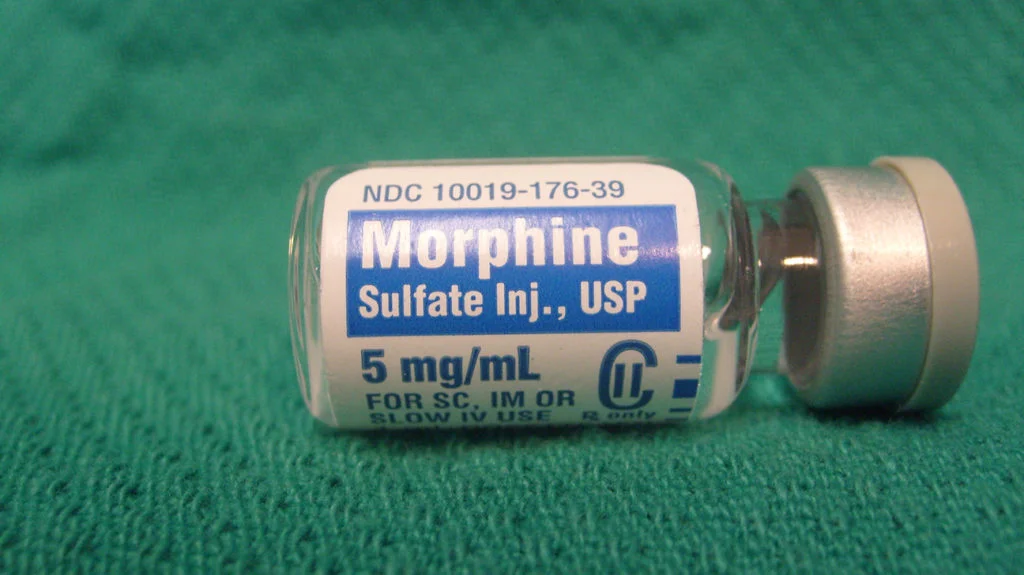Morphine is a potent opioid drug that can relieve pain, induce sleepiness, and, in some people, cause feelings of euphoria. It is potentially very addictive.
In the United States, between 1999 and 2018, nearly 450,000 people died of opioid overdoses, including morphine overdoses. Some people who become addicted to morphine later switch to street drugs such as heroin.
People trying to quit using morphine may find that withdrawal symptoms become worse as the drug leaves their system.
Breastfeeding mothers may want to know how long the drug remains in their breast milk, while people subjected to workplace drug screenings may worry about positive drug tests.
How long it takes for morphine to leave a person’s body depends on numerous factors, including how much they take, metabolism, age, body size, and general health. Read on to learn more.

Image credit: Wikimedia Commons 2009
The effects of morphine include:
- pain relief
- sleepiness
- changes in mood and behavior
- feelings of euphoria or wellness
The side effects of morphine include:
- slowed breathing
- changes in the heart rate
- low blood pressure
- stomach pain, including diarrhea, nausea, and vomiting
Some people may also experience side effects relating to the way they take morphine. For example, morphine injections may cause pain or irritation at the injection site.
One of the most common side effects of morphine is tolerance. As a person’s tolerance of the drug builds, they need more morphine to get the same results they once got with less.
If people continue using morphine, it can lead to dependence and addiction.
Those who develop an addiction to morphine may experience intense cravings between doses, or feel like they need morphine to be “normal.”
The timeline of morphine effects depends on several factors, including how a person takes the drug, how much of it they take, and whether they have developed a tolerance to it.
Injectable morphine relieves pain within 5–20 minutes. Pain relief peaks around 60 minutes, and lasts for a total of 3–4 hours. The other effects of the drug generally follow a similar line.
Oral morphine takes slightly longer to work, but pain relief peaks by about 60 minutes after taking the drug. Pain relief and other side effects usually wear off within 4–6 hours.
The metabolites of morphine remain in the body even after a person no longer feels the drug’s effects.
People undergoing morphine drug testing should ask about the sensitivity of the test. The more sensitive the test is, the more likely it is to detect morphine. Highly sensitive tests may also produce false positives.
Blood
Blood tests for morphine show a negative result more quickly than other tests. This is because morphine reaches peak blood concentrations within 1 hour or so of use.
The body quickly metabolizes the drug, and the half-life, or the time it takes for the body to metabolize half of the dose, is just 1.5–4.5 hours.
The half-life length of morphine means it will usually exit the blood within several hours, and a blood test will almost always be negative within a day or two.
Urine
Morphine exits the urine relatively quickly. Depending on the size of the last dose, a person’s metabolism, how much water they consume, and similar factors, a urine sample is usuall
| ssss | 28 grams, 56 grams, 8 Oz, 1 Pound |
|---|
Be the first to review “Morphine” Cancel reply
You must be logged in to post a review.
Related products
Chemicals
Carts and Cakes
BUY WEED ONLINE
Carts and Cakes
BUY DMT ONLINE














Reviews
There are no reviews yet.